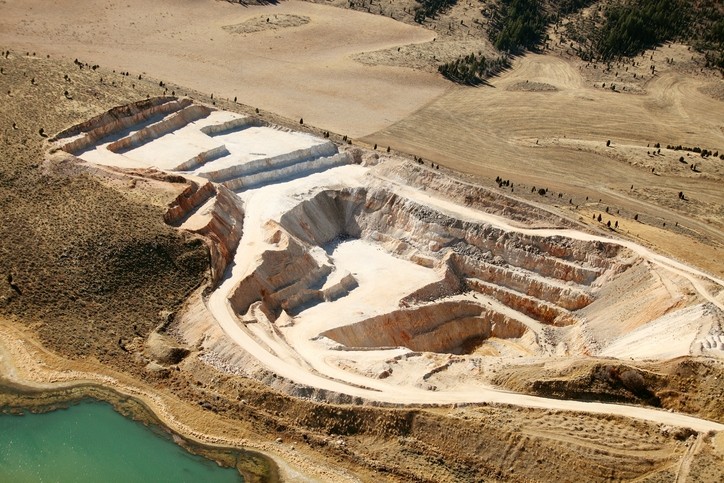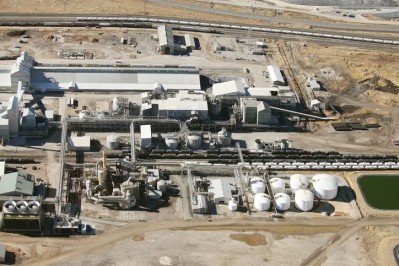Substitutes and saturation undermining feed phosphate market

CRU released a report in August on the sector, a health check on IFP production globally. We caught up with CRU principal consultant, Juan von Gernet, one of the authors of that review, to hear more.
“Demand for IFP is not as strong as we had anticipated in our previous review back in 2012. Prices are weaker than forecast. It is a much more competitive market now, and worryingly there are capacity adding projects in the pipeline,” said the analyst.
Alternatives such as phytases have made huge inroads, more than expected, said von Gernet. “Phytase producers have enjoyed eroding the feed phosphate market share,” he added.
Rush to the bottom on prices..
And the Chinese producers have been encouraging a rush to the bottom on prices: “With so much capacity, players there have been only too willing to place phosphate products on the market cheaply,” said the analyst.
China is a very large producer of phosphoric acid and phosphate rock, the feedstock used for producing Di-Calcium Phosphate (DCP) and Monocalcium Phosphate (MCP) feed phosphates, he said.
And most Chinese phosphate rock is found in Yunnan, Guizhou, Sichuan and Hubei, which are also the areas that contain most of the country’s processing capacity, whether on the fertilizer or feed phosphate side of things.
The three largest Chinese producers by capacity are Lomon, SinoChem and Chanhen, reported CRU.
Demand switch
The CRU analyst has noted also a demand switch: “DCP feed phosphates used to have the largest market share. We see that MCP variety is now becoming more favored as the phosphorus content is seen as more readily available in those,” added von Gernet.
Overall, he said, it is hard to know what the end game is for IFP capacity building projects that are still in play. Ideally, he said, producers will have to shut down production intermittently to encourage an upturn in prices.
He predicted that IFP prices would likely hover around the $400 a ton mark over the next five years – in 2014, they were at $490 a ton.
CRU data puts the top 10 feed phosphate producers globally, which combined account for 40 to 45% of IFP capacity, as:
- Rouiller Group (DCP/MCP/MDCP)
- Vale (DCP only although its DCP specs are pretty close to that of MDCP)
- PotashCorp (DCP, MCP & DFP)
- Mosaic (DCP, MCP and Nexfos)
- Yara (mostly MCP/MDCP)
- Lomon (DCP)
- EuroChem (MDCP/MCP and DFP)
- PhosAgro (MCP only)
- SinoChem (MDCP/MCP)
- Chanhen (MCP)
Saudi plant on hold
However, von Gernet, noted that some feed phosphate plant production plans have been put on hold, such as the previously pegged project by Saudi producer, Ma’aden Phosphate Company, which had a 2016 completion data tagged onto it.
Ma’aden, a relatively new entrant into the phosphate market, had previously indicated it was building capacity to meet demand in South East Asia, India, Oceania and Eastern Africa.
“As far we know, they have stalled the feed side of the project and are focusing only on the fertilizer business for the moment,” said von Gernet.
New entrants
The CRU analyst reckoned that some new entrants into the feed phosphates game might not have been fully aware of the complexities of developing ingredients to meet livestock production sector needs: “Producers should really think about finding a partner in the feed industry to enter the business. The feed business relies on really long established relationships, and it is not about large bulk products, it is about selling quality product in small quantities,” said von Gernet.
Morocco's OCP is a case in point, said the analyst. It has been operating in the feed phosphates business for a few years, and has a plant in the Safi industrial complex, but von Gernet said its penetration of the animal nutrition sectors in terms of volumes has has been difficult: “They may have initially approached the industry in a similar way to fertilizer – i.e. sales of a bulk product – but have had to adjust. Last year they sold 53,000 tons P205, which despite being up on last year remains below their capacity of around 139,000 tons P205."
He said Norway’s Yara, on the contrary, is very well established and has been successful in feed industry penetration as it has a high quality product and has proved responsive to feed manufacturers’ needs.
US feed phosphates producer, Mosaic, is increasingly being squeezed out of the South East Asian market, and it is focusing on pushing IFP within the Americas.
Lower price driven by intense competition
And in Europe, some companies are competing aggressively for market share, disrupting prices, said von Gernet.
Reasons are varied, “Ecophos is pushing ahead with a number of capacity expansions, which is beneficial to their technology sales business but could impact future pricing.
"Meanwhile, Elixir, has been competing aggressively for market share. To do this they have been using very low cost raw materials, which may have an impact on quality at the end," said the analyst.
The Serbian firm is also planning to expand production capacity, which will only bring IFP prices lower, said von Gernet.
France’s Rouiller Group, is the largest IFP producer by capacity, reported von Gernet and has been aggressively gaining market share in the past few years. But the company has been hit by supply interruption in the past few years due to political and labour challenges in Tunisia, where some of its operations are based.









